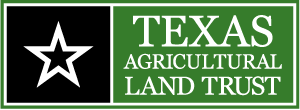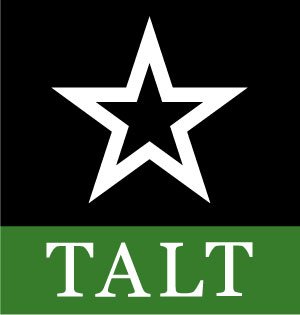Holly Farms
Mary Ruth Rhodenbaugh, owner of Holly Farms in Brazoria County, scratched two big items off of her bucket list.
“As you get older, you realize it’s important to accomplish the things that create the legacy you want to leave behind,” Rhodenbaugh said.
In 2015, the 192-acre property was honored as a Family Land Heritage property, recognizing 100 plus years of continuous agricultural production. In May 2016, she granted a conservation easement to the Texas Agricultural Land Trust, protecting 188 acres of the historic family farm and its productivity in perpetuity from the fast-paced development that is occurring in the proximity of Houston.
“I don’t want it to be sold,” Rhodenbaugh, who was reared on the property and has never lived more than 10 miles away from her ancestral home, said. “I want my grandchildren to have the opportunity to farm the land and raise cattle just like their ancestors did. I want them to inherit it and develop the same feelings for it that I have. Roots are important.”
Holly Farms was founded in 1908 when her grandparents, William Brigance, of Honey Grove, Texas moved his bride from Wisconsin to the Texas Gulf Coast with the dream of establishing a dairy farm. They settled between the Brazos and San Bernard rivers. Evaluating the way the oaks and palmettos grew, William identified high ground on which to build their home, but the harsh realities of the Gulf Coast’s climate prompted the couple to switch their focus from dairy farming to cotton, corn and cattle. Today, Rhodenbaugh runs cattle and produces hay.
All photos taken by Clint Faas
“My grandparents weathered World War I, the Depression and World War II on this land. I know the sacrifices that were made to hold on to it—and my generation and I are not going to sell it,” said Rhodenbaugh.
While her family history inspired Rhodenbaugh to conserve the property, the words of Andy Sansom, former executive director of the Texas Parks and Wildlife Department and a fellow Brazoria County native, who was the speaker at her daughter’s commencement from Texas Tech University, was the impetus. Sansom noted the greatest threat to Texas was the demise of the family farm and ranch.
“It hit me right between the eyes,” said Rhodenbaugh, who had watched as the rich farmland of Brazoria County succumbed to the concrete sprawl of Houston. “It stayed with me from that moment, and inspired me to do what I could to keep open spaces not just for my family, but for those other families who were now calling Brazoria County home.”
A conservation easement held by an ag-friendly land trust seemed to be the most practical solution for the former school teacher and retired Dow employee. Rhodenbaugh had budgeted to cover the costs associated with enacting a conservation easement when she learned that Holly Farms might be eligible for funding under the General Land Office’s Texas Farm and Ranch Lands Conservation Program, which, in this case, utilized funds from the Federal Coastal Impact Assistance Program. Her partners at TALT helped Rhodenbaugh navigate the bureaucratic waters.
“I planned for this and I could’ve done this, but TALT made it easy to maneuver the steps and obstacles,” Rhodenbaugh said. “As we worked through the process, we moved toward a shared vision for Holly Farms.”
Although the process is time-consuming, detailed, and emotional, it is worth the effort.
“Establishing a conservation easement is not easy, but it is a tremendous learning experience,” Rhodenbaugh said. “While Holly Farms is not huge by Texas standards, I hope it will be example of what can be done on smaller acreages. It doesn’t have to be 10,000 acres to be important. We’re conserving land—and it all matters.”



